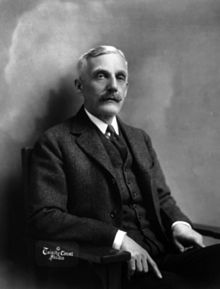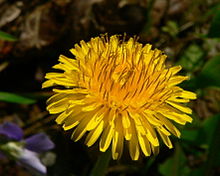The 1920s was a period of excellent economic growth for the United States. The nation had just victoriously finished fighting in World War I, which had allowed increased industrial production. Many American residents had just begun to buy products on credit. Even a lot of big corporations, such as GM, gained huge profits from speculation. Americans also enjoyed plenty of entertainment from movies and radios. Meanwhile, the U.S. government tried to not interfere with the economy since they had embraced the concept of supply-side economics* (as advised by Secretary of Treasury Andrew W. Mellon). But the lack of government intervention didn't seem to matter because the 1920s had arguably the image of an "American Golden Age". It is this "Golden Age" that many conservative Republicans today, especially Donald Trump, strive to go back to. But F. Scott Fitzgerald had noticed that the economic boom had come at a huge cost: poverty among the working class.
Fitzgerald had described this poverty as "a valley of ashes" in The Great Gatsby (Fitzgerald 23). He uses this metaphor to create an image of a filthy area. Since the area was so dirty, many "men" living in this area, such as George B. Wilson, are assumed to be of the lower class (Fitzgerald 23). Fitzgerald even includes a description of Doctor T. J. Eckleburg having "a pair of enormous yellow spectacles" to demonstrate how rich the man is because "yellow" looks very similar to gold (Fitzgerald 23). The fact that Eckleburg's portrait is above the "grey land" conveys the massive gap between the working class and upper class (Fitzgerald 23). Fitzgerald even seems to convey that the gap represents how only the upper class (and perhaps a bit of the middle class) were benefitting from the economic boom of the 1920s while the working class barely got any benefits at all. It is even very possible that some members of the working class desire to enjoy the pleasures of the upper class. Fitzgerald demonstrates this through Myrtle Wilson, who had claimed she "made a mistake" marrying Mr. Wilson (Fitzgerald 35). She is unsatisfied with Wilson because he wasn't wealthy. So she tries to be "Tom Buchanan's mistress" because she thinks Tom is her golden ticket to the wealthy class (Fitzgerald 24). Ironically, while Tom lets Myrtle be his mistress, they would not "get a divorce and get married to each other right away" (Fitzgerald 33). This perhaps shows that Tom does not want a lower class women to move into the upper class. Tom even "broke [Myrtle's] nose" at the end of chapter 2 (Fitzgerald 37).
Donald Trump had promised that he would "make America great again." He was referring to the excellent economy of the 1920s and how it was a "Golden Age". However, even if Trump succeeds in promoting a similar economic boom as the Roaring 20's, he would, according to Fitzgerald, be isolating the lower class. That's because many conservatives today in this country have the mindset of creating economic stability by using supply-side economics, which would mean practicing laissez-faire economics that mainly benefit the upper class. This concept would actually lead to a wider gap between the rich and the poor rather than a narrower one.
*Supply-side economics is a theory in which money from the upper class would gradually "trickle down" to the lower classes as the people of the upper class spend their money.
Wednesday, November 23, 2016
Saturday, November 19, 2016
My Final Impressions of The Bluest Eye
When I finished reading The Bluest Eye, I had mixed feelings about the book. On one perspective, I appreciate Toni Morrison's lyrical prose. She uses words such as "softly, purringly," and "lovingly" to create beautiful symbolic imagery (Morrison 58). There are even so many symbols Morrison uses, that it would take an entire year to decipher all of their meanings. I even loved how Morrison conveys how racism is more complex than it seems, and can affect society in unnoticable ways. On the other perspective, I would not recommend The Bluest Eye to anybody for leisure. Nor would I want to read the book again. I am even dissuaded from reading Morrison's other novels, including Song of Solomon. My reasons do not just include the disturbing incest scene, but also the ambiguous ending.
I will not go into detail about Pecola's rape because it is too sensitive of a topic for me to write about. Instead, I will criticize the ending dialogue for being too ambiguous. It is ambiguous because their is absolutely no way to know for sure that Pecola was talking to an imaginary friend. Morrison never even directly states that the friend was imagined by Pecola. I know that there are some people who may argue that the italicized words prove that the friend was part of Pecola's thoughts. My rebuttal is this: even though the friend's dialogue is italicized, it does not prove at all that he or she is imaginary. (I do not even know the friend's gender). Even Ms. Valentino's confirmation of the friend being made-up by Pecola is not enough. She had not written the book, Morrison did. Even if Morrison herself claims the friend was part of Pecola's mind, I would firmly ask her "Can you use textual evidence from the novel to prove your point?" Maybe she would admit the ending was flawed in its clarity, or maybe she would say the ending was ambiguous on purpose. If she replies with the former option, I would feel annoyed about how she made an obvious flaw. If she replies with the latter, I would automatically ponder on the ambiguity's meaning in an exhausting way. Regardless of which choice is correct, just thinking about it stresses me out. I prefer to read a book that actually provides a relaxing escape from my stressful life. The Bluest Eye just does the exact opposite.
Note: If you disagree with me, do not be afraid to comment. I won't delete it.
I will not go into detail about Pecola's rape because it is too sensitive of a topic for me to write about. Instead, I will criticize the ending dialogue for being too ambiguous. It is ambiguous because their is absolutely no way to know for sure that Pecola was talking to an imaginary friend. Morrison never even directly states that the friend was imagined by Pecola. I know that there are some people who may argue that the italicized words prove that the friend was part of Pecola's thoughts. My rebuttal is this: even though the friend's dialogue is italicized, it does not prove at all that he or she is imaginary. (I do not even know the friend's gender). Even Ms. Valentino's confirmation of the friend being made-up by Pecola is not enough. She had not written the book, Morrison did. Even if Morrison herself claims the friend was part of Pecola's mind, I would firmly ask her "Can you use textual evidence from the novel to prove your point?" Maybe she would admit the ending was flawed in its clarity, or maybe she would say the ending was ambiguous on purpose. If she replies with the former option, I would feel annoyed about how she made an obvious flaw. If she replies with the latter, I would automatically ponder on the ambiguity's meaning in an exhausting way. Regardless of which choice is correct, just thinking about it stresses me out. I prefer to read a book that actually provides a relaxing escape from my stressful life. The Bluest Eye just does the exact opposite.
Note: If you disagree with me, do not be afraid to comment. I won't delete it.
Saturday, November 12, 2016
Mr. Breedlove and Slavery
Reading the section of Cholly's past was a bit thought-provoking for me. Originally, I thought that Cholly was an indifferent alcohol addict; however, Morrison explains Cholly's life to show that he wasn't always a horrible alcoholic. Morrison even demonstrates how Cholly's life has been affected by society, which is something I will try to base this post on.
Before, I write about Cholly, I will like to mention the scene in which Aunt Jimmy, Mrs. Gaines, and Ms. Alice talk about a time when "Everybody in the world was in a position to give them orders" (Morrison 138). The most obvious inference is that the three women are referencing to their lives as slaves. They even remember "When white men beat their men, they cleaned up the blood and went home to receive abuse from the victim" (Morrison 138). Morrison includes this conversation because she wants to establish a connection to the event in which Cholly was caught by "two white men" while having sexual intercourse with Darlene (Morrison 147). Cholly ends up "hating [Darlene] so much" even though it was the white men who forced the couple to continue mating (Morrison 148). Cholly was willing to take out his humiliation on Darlene instead of the "hunters" because "Such an emotion would have destroyed him" (Morrison 150). This incident would be similar to Aunt Jimmy's conversation because Cholly has been abused by white men and wants to "strangle" Darlene (Morrison 149). He knows he could not "strangle" the white men because he knows they have more power over him, so he wants to punish someone who he thinks he has power over (which would be Darlene). The connection Morrison tries to make in this section is between slavery and Cholly's frustrated feelings. It serves as a message that conveys how slavery has a long-lasting legacy on American society, even though it doesn't exist anymore. This legacy perhaps manifests itself in the form of racism and beauty standards, all of which are subjects that Morrison tackles in The Bluest Eye.
Before, I write about Cholly, I will like to mention the scene in which Aunt Jimmy, Mrs. Gaines, and Ms. Alice talk about a time when "Everybody in the world was in a position to give them orders" (Morrison 138). The most obvious inference is that the three women are referencing to their lives as slaves. They even remember "When white men beat their men, they cleaned up the blood and went home to receive abuse from the victim" (Morrison 138). Morrison includes this conversation because she wants to establish a connection to the event in which Cholly was caught by "two white men" while having sexual intercourse with Darlene (Morrison 147). Cholly ends up "hating [Darlene] so much" even though it was the white men who forced the couple to continue mating (Morrison 148). Cholly was willing to take out his humiliation on Darlene instead of the "hunters" because "Such an emotion would have destroyed him" (Morrison 150). This incident would be similar to Aunt Jimmy's conversation because Cholly has been abused by white men and wants to "strangle" Darlene (Morrison 149). He knows he could not "strangle" the white men because he knows they have more power over him, so he wants to punish someone who he thinks he has power over (which would be Darlene). The connection Morrison tries to make in this section is between slavery and Cholly's frustrated feelings. It serves as a message that conveys how slavery has a long-lasting legacy on American society, even though it doesn't exist anymore. This legacy perhaps manifests itself in the form of racism and beauty standards, all of which are subjects that Morrison tackles in The Bluest Eye.
Friday, November 4, 2016
Observations of The Bluest Eye
Subscribe to:
Comments (Atom)



